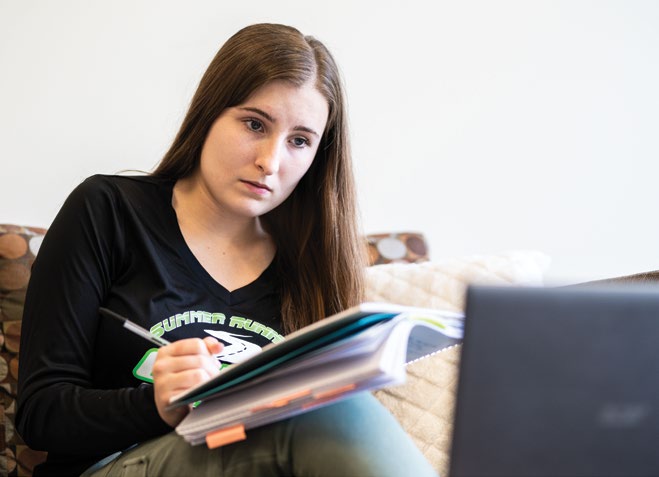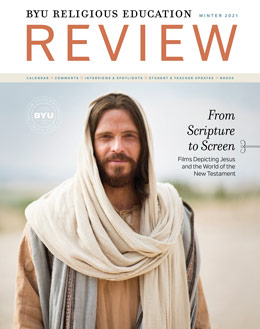Visualizing the Restoration
Editor's Note
Scott C. Esplin, Publications Director
Recently, my siblings and I have been assembling family photographs in celebration of my parents’ fiftieth wedding anniversary. I was struck by the scarcity of pictures from earlier years, compared to the tens of thousands of images, accompanied by the thousands of videos, that clutter (overwhelm) my phone, computer, and cloud drive. Today, I document every first step, first meal, first birthday, first tooth, first lost tooth, first snowstorm, first spring flower, first plane ride, and first visit to the beach. My collection of visual memories seems endless.
 We live in a visually saturated world. Photo by Rebekah Baker, © 2020 BYU Photo.
We live in a visually saturated world. Photo by Rebekah Baker, © 2020 BYU Photo.
We live in a visually saturated world. Video calls have replaced the letters, and then the phone calls, we used to use to keep in touch. Remote instruction introduced millions to the world of Zoom calls and video conferencing, with all of their attendant benefits and challenges. Many of us are struggling to keep up with these communication changes.
This issue of the BYU Religious Education Review highlights efforts made by many within Religious Education to communicate the message of the Restoration in a broad variety of ways. In the feature article, Professor Matthew Grey of the Department of Ancient Scripture discusses his research on films about Jesus, offering insights on recent projects like The Christ Child and The Chosen. In another article, Alex Baugh, chair of the Department of Church History and Doctrine, reflects on newly released videos about the history and doctrine of the Church designed to help viewers “learn, understand, and feel more deeply the things of the mind and the feelings of the heart.” Professor Anthony Sweat discusses the growth in popularity of the Y Religion podcast, an audio effort to highlight current research produced by faculty within Religious Education that has risen to become one of the top one hundred religion podcasts in America. Reflecting the reach of BYUtv, Professors Gaye Strathearn, Barbara Morgan Gardner, Daniel Becerra, and many others take their classroom skills to the small screen through Roundtable Scripture discussions and the popular show Come Follow Up. Finally, we highlight student experiences as they continue to deepen and share their spiritual learning in spite of the ongoing COVID-19 pandemic.
We learn and communicate in many different ways. A few nights ago, while listening to a radio broadcast of a basketball game, I realized this was a media format entirely foreign to my children. I still enjoyed the game without the accompanying video, just as I enjoy curling up with a good book when audiobooks abound. But I am also grateful for all the many ways visually, auditorily, and through the printed word that I can celebrate the good news of the gospel of Jesus Christ.
Gratefully,
Scott C. Esplin
Publications Director
BYU Religious Studies Center
